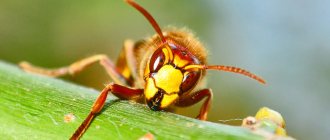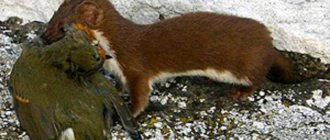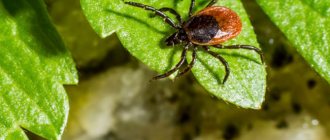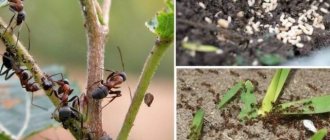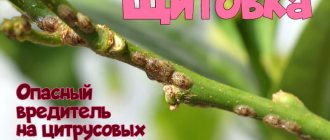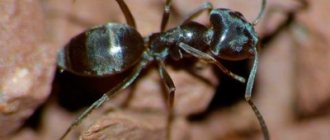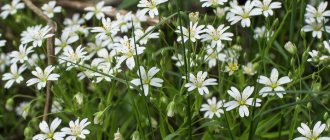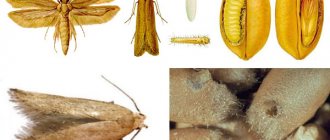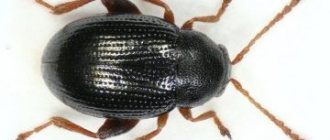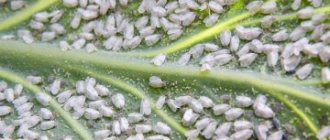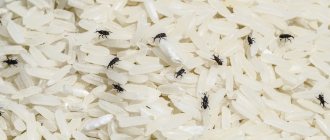Among vegetable garden pests, kiwis are distinguished by their slowness and secretive lifestyle. In small quantities, they are beneficial by processing rotting organic matter. Centipedes, together with earthworms, contribute to the formation of fertile humus. When they multiply en masse, they begin to feed on the roots and young shoots of agricultural crops. Millipedes damage strawberries and raspberries, gnaw potatoes, beets, and climb tomatoes. In order to prevent crop losses, you need to know how to get rid of grasshoppers in your dacha.
Meeting the Kiwis
Kivsyaks are two-legged centipedes that primarily live on the forest floor. Another name for this family is diplopods. Each segment of the centipede's body (except the first three) has two pairs of limbs. There are about 8 thousand species of these animals in the world. The body is elongated, consists of many segments, more than 30 pieces. The body is completely enclosed in a protective shell. This structure makes the nooses invulnerable to mechanical stress and protects them from chemicals.
Interesting fact. The movement of diplopods begins with the forelimbs, then the remaining legs are connected. A kind of wave passes through the body.
The length of centipedes ranges from 2 to 30 cm. Giant individuals are found only in the tropical latitudes of Asia, Africa, and America. In temperate regions of Russia, millipedes of more modest sizes are found. Kivsyaks living in forests bring tangible benefits. Over the course of a year, they process a huge amount of rotting plant residues. In the middle zone, a common species is the gray noose. Its color is gray-steel, length 25-45 mm. Another common species is the sandy nodule. It is black in color and has two longitudinal orange stripes on its back.
Reproduction occurs by laying eggs. The male and female mate in warm weather (25-280) with high humidity. For laying, a nest is built from pieces of soil and excrement. The offspring are similar in appearance to adults, but differ in fewer body segments. During the growth process, they experience several molts. After each nod, several segments and pairs of legs are added.
Methods for exterminating individuals
In order to regulate the number of nods, the following methods are used:
- agrotechnical;
- mechanical;
- prophylactic;
- biological and chemical.
Each of them brings certain benefits to the garden, but for the effect to be most effective, they need to be used in combination with each other.
Agricultural measures include regular destruction of weeds, periodic loosening of the soil and deep plowing after harvesting, when the first frosts begin. The mechanical method involves placing special traps and baits over the area of the site.
Preventive measures at the dacha include moderate, not too abundant watering of plants and the addition of humus or humus to the soil - in enriched soil, people are unlikely to become interested in garden plantings.
Chemical and biological agents are not always effective due to the dense chitinous shell of pests, so they are used only in extreme cases.
Methods of local influence on soils or plants differ for different crops and agricultural technologies:
- strawberry bushes are protected from millipedes by mulching with straw;
- in greenhouses and greenhouses, during the growing season of plants, the surface layer of soil is removed for the purpose of disinfection;
- flower pots are filled with water for a couple of hours.
The effectiveness of each of the listed methods of combating moths is less reliable than a unified system for preventing them from entering the site. Its essence: to do all the same things in combination, only for the purpose of prevention.
And cultivate the nooses separately as a valuable source of humus - the key to the productivity, taste and usefulness of the fruits you grow.
Nodding at home – to be afraid or not
Kivsyaki are vegetarians, so they prefer to live in nature, among vegetation. They settle under stones, in piles of tops, under the remains of building materials. In these places, moisture is retained longer, and centipedes are also protected from sunlight. There are times when nooks break into the house. This occurs during periods of high humidity when the number of invertebrates becomes enormous. They are looking for new territories to settle. Choose rooms in the house where there is water - kitchen, bathroom. They can scare impressionable owners by crawling along walls and ceilings.
Diplopods are active at night; the sun dries out their bodies. They do not bite and are not carriers of diseases and infections. When threatened, centipedes curl into a tight spiral. This is how they protect the abdomen. Odorous and poisonous secretions from holes on the side help scare off predators. They are absolutely harmless to people; just wash your hands with soap.
Neighborhood with centipedes does not make anyone happy. When they appear, the question becomes acute: how to get rid of clowns in the house? Unfortunately, the action of insecticides on them is not always effective. It is better to use baited traps. They are laid out in the evening; to attract centipedes, cut potatoes and wet rags are taken. In the morning, the nods are trapped, they are collected and destroyed. You can add Pochin along with the food bait. This is an insecticide in the form of granules recommended for the destruction of soil pests.
General agricultural practices
Organizational and preventive measures taken in a timely manner bear fruit in the struggle for the harvest. Among them:
- late autumn plowing and early spring cultivation, which contribute to the freezing of centipedes;
- growing green manure in combination with crop rotation;
- liming of lands;
- mandatory rules should be: the use of rotted manure, composts and humuses; control of their biological composition and final preparation.
Centipedes on the window
Nourishing plants cause big trouble to lovers of indoor plants. There is a small amount of organic matter in the pot, so the millipedes that get there begin to eat the roots of the flower. How do diplopods get onto houseplants? A common option is with soil taken from a summer cottage. If the soil was not treated before planting, the pest will move from the garden to the apartment.
Advice. Treat the soil in at least the simplest way - pour boiling water on it.
Favorable conditions for the development of centipedes are created by pouring tea leaves into a pot. Untimely removal of fallen leaves and buds provokes the proliferation of the pest. An overgrown colony of centipedes eats all the dead organic matter and takes over the flowers themselves. The safest way to get rid of them is to place the pot in a bowl of water. The flies will float to the surface, all that remains is to collect and destroy them. If this method cannot be carried out due to the large size of the plant, then insecticides are used - “Aktofit”, “Karate Zeon”.
Destruction with baits
The most popular method among people to get rid of centipedes is to feed them with pieces of root vegetables loaded with insecticides. The bait is scattered throughout the area. This simple method requires regular troubles: moistening the bait, renewing it, protecting it from rain, and collecting bait.
Therefore, they complicate it:
- At the bottom of the funnels, trapping containers (glass jars, cans with vegetables) are buried;
- the bait is placed under an opaque heat-light-moisture insulator (board, plywood).
Arthropods readily use such shelters, from which they are systematically removed.
Disadvantages: baits are good when a limited number of individuals have locally settled in a small space. If several colonies have become neighbors, individual selection is unlikely to solve the problem. At the same time, it is necessary to meticulously clear all traps of individuals attracted from all over the area, otherwise the destruction of the nodule will imperceptibly turn into its breeding.
Multi-legged pest in the garden
For gardeners, nooks in the country become a real disaster. They chew roots, weakening plants, and spoil berries and root crops. Usually a spotted or speckled noose lives in the garden. The centipede's body is white or beige, with red or orange spots on each segment. They mark the holes through which the protective secretion comes out. This species has a long, thin body and no eyes. The role of sensory organs is performed by the antennae. Females are longer and thicker than males, their body is 12-15 mm, and in males - 8-12 mm. Millipedes prefer to feed in the dark. The rest of the time they hide in shelters, and at high temperatures they burrow into the ground. On a cloudy, stormy day, the pest can be seen on the surface.
Attention. Due to their secretive existence, garden owners do not immediately realize the true culprit of plant damage.
Centipedes try to stay close to food sources; if there is a dung pile on the site, you will find them there. Their lifespan is 4-5 years, so development from larvae to adult is slow. The process takes 3 years. Females lay eggs near the feeding areas of the larvae - near strawberries and cucumbers. The offspring emerges in 2-4 weeks depending on weather conditions. The larvae will have to molt several times. Pests overwinter in the soil; adults and larvae enter diapause.
Nooks in the country - how to get rid of them using folk remedies
Insecticides are not used to control adult millipedes. The chitinous shell on the back and sides firmly protects the body from the penetration of poisons, and the vulnerable abdomen is securely hidden. Spraying helps to destroy only the young generation, which has not yet become covered with chitin.
Effective, but labor-intensive methods of controlling grasshoppers are mechanical tillage and trapping of adult pests.
Note! In gardens where organic matter is regularly added to the soil, the likelihood that grasshoppers will begin to eat plants is extremely low. The main thing here is to control the number of centipedes by regularly carrying out preventive measures.
Nozzle traps
There are several effective folk methods of dealing with nooses using traps, but each of them requires daily manual collection.
Centipedes are destroyed using the following techniques:
- Old boards laid out in rows since the evening . Centipedes cannot stand the sun's rays and seek shelter under them in hot weather. The summer resident only has to raise the trap at noon and collect everyone who is hiding there. In addition to snails, under the board you will find slugs, wood lice, scolopendras, and snails.
- Rotten fruits or peeled root crops are laid out in small piles around the summer cottage under bushes or on the north side of buildings . To make the bait more attractive, cover it with pieces of cardboard. You can inspect the trap once every few days.
- Glass jars buried in the habitats of the noose . The jars are installed so that the neck remains at ground level or half a centimeter below. Once a week you will need to empty them of their contents.
- Pieces of root vegetables soaked in insecticides . You should not expect that the traps will work autonomously and that all the fish will be poisoned on their own. You will have to inspect them daily, collecting centipedes.
- Winter manure traps . They are arranged in the same way as for mole crickets: heaps of manure (2-3 buckets) are laid out in several places in the garden in the fall. Pests willingly hide in them for the winter. With the onset of persistent frosts, manure is scattered around the area for freezing.
Note! Particular attention should be paid to the destruction of young animals. One adult lays up to 70 eggs at a time. The larvae hatch after 3 weeks.
Favorite breeding sites for grasshoppers are strawberries, cucumbers, manure and compost heaps, and last year's fallen leaves in the garden. Nests with centipede eggs are difficult to notice, but the larvae are clearly visible. These are thin light “worms” about 1.5 cm long. Nesting sites can be treated with insecticides, since the larvae do not have a protective chitinous cover.
Agrotechnical methods for combating centipedes
At a dacha in the Moscow region, winter frost is an effective assistant in exterminating pests. Autumn digging of soil in the greenhouse and in the garden destroys pests that have settled in for the winter. You need to dig deep and after the first frost, when the insects hibernate.
Fallen leaves in the garden and plant debris in the garden should be removed from the surface of the soil and stored compactly. This way you will force the nods to gather in one place, where it will be easier to detect and destroy them.
Boric acid, iodine and gas traps
Common folk remedies for combating harmful insects - ash, boric acid, iodine, soap and tobacco solution - do not have any effect on insects. Experienced summer residents advise pouring boiling water over areas where centipedes gather, collecting the dead with a broom.
How to identify a pest
In cold, wet spring, when plants are growing slowly, millipedes chew cavities in their root systems. These areas darken, and if there is a large area of damage, the crop dries out. Damage to strawberries is indicative. Kivsyaki make depressions of various sizes in the soft berries. In some cases, larvae remain inside. Typically, centipedes prefer rotten vegetables and fruits, but they will also crawl onto fresh ones. Especially if they are located close to the ground. The following crops are at risk:
- sugar beet;
- zucchini;
- potato;
- carrot;
- melon;
- tomatoes.
Not only the spotted nodule, but also other species - gray, Crimean, sandy - may appear on the site. All of them have a segmented body with double pairs of limbs, different colors - from steel to black. Millipedes breed in open and closed ground. In the humid environment of a greenhouse, they reproduce at a high rate.
Attention. It is important to start destroying the pest in time; in a day they eat an amount of food that exceeds half their own weight.
Chemical treatment
Before you fight a centipede with pesticides, you need to weigh the pros and cons. In addition, chemicals will not have the desired effect due to the presence of a durable chitinous coating on the enemy. However, it is still possible to achieve a reduction in numbers with the help of properly selected herbicides: products such as Karate, Actofit and nematicides will be effective.
It is best to carry out local treatment of planting holes. A more gentle method is treatment with solutions of chloride salt, which is applied to the soil in the evening. It is worth noting that treating stems and seeds will not protect against millipedes, but regular procedures carried out in the soil will help control the pest population.
Agricultural techniques are used as preventive control measures:
- deep moldboard plowing of the land after harvest;
- correct crop rotation;
- growing green manure on the site;
- soil liming;
- removal of the surface layer of soil in greenhouses and conservatories.
It is worth remembering that each of the listed measures turns out to be less effective in comparison with an integrated approach, therefore it is recommended to apply control measures together, and to grow the centipede separately as a source of valuable humus.
Treating the soil with chemicals does not give a complete chance of clearing it of the seven hundred centipede (that’s how many legs a squid has): the chitinous shell is too strong. Nevertheless, some insects, mainly larvae, die under the influence of drugs in a period of 5 hours to 5 days. Properly selected herbicides will help get rid of pests.
The compositions “Aktofit”, “Karate”, and nematicides are used. Local treatment of planting holes reduces the negative effect of the use of chemically unsafe compounds. A more environmentally friendly and effective remedy is treatment with solutions of chloride salts. Substances are added to the soil in the evening, when insects emerge from their shelters.
The chemical treatment schemes for plants and land adopted in Russia do not provide precise recommendations for combating this creature. However, regular chemical treatments can reduce centipede numbers.
Measures to combat the nodule
In the fight against centipedes, the main emphasis is on mechanical and agrotechnical methods of destruction. Due to its special repellent secretions, the pest has few natural enemies that could help control its numbers.
Baits for pests
If the nooses have multiplied in the garden, they are fought with the help of traps. There are several types of them:
- Make artificial shelters for shade-loving diplopods and collect them by hand.
- Lure them onto pieces of potatoes, carrots or other vegetables, collect and destroy them.
- Dig shallow grooves up to 10 cm, and place empty cans at the bottom. When crawling over an obstacle, pests will fall inside the container.
This method requires consistency; the baits must be monitored and accumulated individuals must be removed in a timely manner.
Agrotechnical actions
- To prevent the strawberries from damaging the strawberries, straw or mulch is poured onto the beds at the beginning of spring.
- Pests love moisture, dryness is destructive for them, so loosening the top layer of soil is recommended.
- If fruits damaged by the millipede are noticed, they are removed immediately.
- Pests are collected manually from traps and beds in the evening.
Chemicals
The effect of chemicals on grasshoppers is less effective than on other pests. But there are still benefits from insecticides. They destroy young larvae whose shells have not yet hardened like those of adults. It is recommended to use new generation products – “Aktofit”, “Karate”. The introduction of chloride salts into the soil has a negative effect on centipedes. In the evening, when the pests emerge from their shelter, regular table salt - NaCL - is sprinkled.
How do millipedes live and what do they eat?
The habitats of these slow-moving creatures are inhabited by many bacteria, various invertebrates and insects:
- Kivsyaki dig passages in the ground. They are active in the evening and at night.
- In cloudy weather they can be found on the surface during the daytime.
- In case of drought, when the top layer of soil dries out, they safely go deeper, to where moisture is still retained.
- They usually burrow into the ground and freeze. Frightened by something, they sharply curl up into a ring.
- Their foul odor is associated with their color. The brighter it is, the stronger the specific “aroma” emanating from the millipede clusters.
The diet of the noon is quite varied, and the volumes of food consumed are simply enormous. The weight of what was eaten per day is 1.5 times greater than its own weight. In addition to mushrooms and tree leaves, nooses are attracted to half-rotten tree branches, bark, and stems of dead plants. One could say that these are ordinary scavengers, mainly processing plant waste. If not for one very important nuance. Noiseweeds happily reproduce in manure, which is the best nutrient medium for them. And that’s why there are a lot of them in dachas and rural gardens.
Blossoms that multiply in large numbers become pests, damaging not only the fruits, stems, but also the roots of many garden plants to such an extent that their development slows down and they begin to “wither.”
The size of these creatures does not exceed 15 mm. They are also:
- white, yellow, brown, black and olive;
- with warts on the body;
- with sparse setae.
The millipede often gets into the garden or summer cottage along with manure mixed with straw. Therefore, when purchasing this organic fertilizer, which is very useful for many plants, you need to make sure that there are no larvae or adult creatures.
The noose is sometimes confused with ordinary worms or wireworms. In the garden it can be found on potatoes and raspberries, strawberries, tomatoes, and fallen apples. Young seedlings suffer from these centipedes, and the pest does not refuse germinating seeds.
Five tricks to help protect your harvest from damage
Every summer resident knows that fresh, just picked strawberries are more fragrant and sweeter than imported ones, potatoes are more crumbly, and carrots are healthier. To the surprise of city gardeners, many earth dwellers - unexpected co-owners of the site - have full control over the harvest. Particular irritation is caused by a variety of crawling creatures, which include centipedes - giant nodule.
The desire to get rid of diploids is understandable, but not always rational. The crop is damaged more often by others - the organisms accompanying the crops, which end up in the garden with natural organic fertilizers.
Agricultural standards superficially describe the technology for combating centipedes, while textbooks pay more attention to the destruction of other pests
Harmful worms usually prefer other food - damp and rotten leaves. But, once in beds cleared of such debris, they can compete with humans in the consumption of garden crops, destroying tubers, individual roots and low-hanging fruits. The greatest troubles can be caused to lovers of home flowers, as well as to owners of greenhouses, conservatories and hotbeds.
Ghana gharial
The Ghanaian gharial is a reptile of the order of crocodiles, but despite its impressive size and the presence of a huge number of teeth, it does not pose a danger to humans. Gharials are rare ancient animals on the verge of extinction that live in the north of the Hindustan Peninsula. They live in calm areas of deep rivers and very rarely go onto land. Over centuries of close cooperation with gharials, people have become convinced that this scary-looking animal does not pose a threat to humans. The only trouble is that there is an opinion among fishermen that gharials are responsible for the decline in fish populations, but at the same time in India they are still considered sacred animals and they do everything to preserve the population of these unusual reptiles.
Unusual pet - how to care for a nosy
Fans of exotic fauna should pay attention to the tropical nooses. Diplopods are unpretentious in nutrition and do not require special care
A large number of species allows you to choose an interesting specimen. The colors and sizes of centipedes are presented to suit every taste. What does the noddy eat? He is a vegetarian, but not a picky one. The diet includes: vegetables (cabbage, potatoes, carrots), cereals, fruits, cottage cheese. For normal life, they need a thick layer of soil with foliage and wood. Lime must be mixed with the substrate; it is a natural source of calcium. Microorganisms living in the soil play an important role in the digestion of centipedes. You cannot completely destroy the symbiotic union; when changing the litter, be sure to leave some of the old one.
In the box for keeping the nod, it is necessary to control and maintain a certain temperature and humidity. Usually it is 23-28 with a humidity of 70-90%. To maintain the necessary microclimate, the soil is frequently sprayed. There must be holes for ventilation. Peace-loving creatures can coexist in the insectarium with various arthropods - woodlice, earwigs, or live in groups. African nooses are often infested with mites. After purchasing, they should be wiped with alcohol.
The only disadvantage of centipedes is that they prefer to spend time buried in the soil. They appear on the surface at night, but are afraid of light. You will have to watch them in the twilight. When the time comes to molt, the nodule hides for a long time in an underground dwelling. Shedding the shell takes two to four weeks. Caring for the nodule requires removing it from the box. If your pet is not used to being handled, it is better to wear thin medical gloves to protect the skin from secretions.
Prevention measures
You can get rid of the centipede even before it appears - with preventive measures.
- Always tighten the taps tightly and correct faults in a timely manner.
- Maintain sewer pipes in order.
- Once a week, carry out general cleaning in the bathroom, wiping away moisture in hard-to-reach places.
- Do not allow accumulation of wet rags, towels, or napkins.
- After water procedures, air dry. You can leave the door open overnight.
- If there is dampness in the house, dry the moisture with an air conditioner or heater.
- Keep the basement clean and eliminate any cracks in the subfloor.
The lower floors often suffer from millipede infestations. Because they crawl away in search of food from the basement
It is very important to seal all the cracks in the apartment to make the entry of centipedes impossible. Ensuring a complete absence of moisture in the bathroom is actually quite difficult.
You can get rid of centipedes using a safe method, and also a useful one - order, cleanliness
And for those who struggle with cockroaches in the house for a long time and cannot get rid of them, the expulsion of flycatchers can be postponed
You can get rid of centipedes using a safe method, and also a useful one - order, cleanliness. And for those who struggle with cockroaches in the house for a long time and cannot get rid of them, the expulsion of flycatchers can be postponed.
If you have ever met a centipede, the impression was not very pleasant. Quite aggressive appearance, a large number of legs, impressive size and hairy body. No one wants these pests to take up residence in their own apartment.
Experts note that insects prefer the night, but this does not mean that they cannot be seen during the day. In this regard, a lot of problems arise; it is not very pleasant to live next door to such a living creature.
Removing such a pest is not very easy; it requires a lot of time and interesting methods. Several of them will be discussed in this article.
Centipedes in the house: a scary neighborhood
Centipedes often appear in the house. They come to a person’s home in search of food: cockroaches, bedbugs, fleas, moths. The need for moisture forces people to live in the basement, bathroom, or basement. To hunt, centipedes can crawl out of their hiding places into other rooms. A centipede bite is usually not dangerous. The exception is poisonous species living in regions with warm climates. In temperate latitudes, there are individuals that are unable to bite through human skin. Moreover, arthropods cannot be called aggressive creatures that attack people. On the contrary, very often when large animals, and especially humans, appear, they hurry to retreat.
But still, the inhabitants of the premises in which these creatures have appeared often begin to look for ways to get rid of the centipede at home. This is mainly due to disgust and disgust for creatures whose appearance can hardly be called attractive. Although some exotic lovers keep arthropods as pets.
What to do?
How to get rid of a house centipede that has become an uninvited guest? First of all, you need to inspect the ventilation shafts in the bathroom and toilet, and also check the grilles in the floor. These are the main routes of entry into arthropods. If necessary, you can install a mosquito net on them, and then periodically treat it with insecticides.
It is important to remember that the centipede does not live in dry areas. Therefore, if a faucet is leaking somewhere, then the malfunction must be repaired.
She also needs a lot of food, and most likely there are many other pests in the house that need to be dealt with.
Chemical insect control agents
There are no specific drugs to combat the millipede. You can use universal insecticides against it:
- the well-known “Dichlorvos”;
- aerosol "Raid";
- gel against cockroaches "Great Warrior"
- "Medilis-Ziper" is a toxic, but very effective remedy.
But it is useless to use sticky traps - only a few legs will remain on them, which will be a minor loss for the centipede.
The only harm that a centipede brings to the house is the psychological discomfort of being in its proximity. To get rid of it, you need to fight other insects and high humidity; and also use special insecticidal agents.
What benefits or harm do wasps bring to a summer cottage?
By nature, wasps are natural predators. Their bright colors indicate bold behavior; scammers are always in sight and never hide. The appearance of their shelter prevents the proliferation of other unhealthy insects: flies, mole crickets, weevils, spiders, grasshoppers. They are able to break into bee hives and easily deal with their defenders, destroying the larvae and eating the object of the bees’ labor - honey. Wasps, like bees, contribute their useful share when pollinating plants, which means they increase the harvest.
Unlike bees, wasps have a smooth sting and can sting much more forcefully and repeatedly. The consequences of a bite for a person are much more severe and take longer to resolve. For allergy sufferers, a sting can be deadly. Wasp venom substances can cause a powerful immune response in humans. As a result, swelling of the respiratory tract may occur and if immediate medical assistance is not provided, the victim may suffocate.
Adults feed on sweet juices of fruits and berries. They cannot handle the solid particles of fruit crusts; they eat away at the center of the fruit. The lacewings feed their larvae with protein particles, so they often fly into the house and eat meat and sausages.
How to deal with worms on strawberries
- Deep plowing in the morning frost in late autumn (nose grasses are heat-loving and die at low temperatures).
- Destruction of weeds and timely removal of plant residues.
- Putting things in order: there should be no scraps of boards, slabs, pieces of slate, etc. lying unattended on the ground.
- Loosening the soil to reduce the moisture content of the surface layer.
- In spring, you can isolate young strawberry leaves from the soil surface with a layer of straw or shavings (mulch). You can also isolate the berries using supports for the flower stalks.
- Manual collection of adult nooses and their larvae late in the evening, early in the morning and on cloudy days.
- Before the strawberries ripen, you should start using pieces of potatoes or carrots as bait, spread throughout the area with timely periodic collection and destruction of the nooses.
- During the ripening period, the soil under the strawberry bushes should not be over-moistened.
- When detected, affected berries must be removed immediately.
- It is important to harvest the berries promptly and completely.
Attention! When touched, moths often secrete a pungent secretion, which has a specific odor and colors the hands red or brownish-purple. Sometimes this secretion causes an allergic reaction, so it is recommended to use gloves.
Noiseweeds and other worms are found quite often on strawberries.
Reasons for appearance and habitat in the apartment
So, we know: for woodlice to appear in an apartment, there must be high humidity (dampness), which will be an ideal factor for the existence and reproduction of small creatures. Perhaps in nature these representatives of the fauna feel more comfortable than in a space limited by walls, but once in human housing, they choose:
- Bathroom or toilet room.
- Storerooms.
- The kitchen, especially the areas under the sink.
- Ventilation shafts and air ducts.
What attracts woodlice there? Now let’s figure it out, because the reasons can be very different:
- In the kitchen there are leftovers of food that have already begun to rot in the trash can.
- Stagnant water in buckets, bowls or other containers.
- Leaking toilet and wet rags on the floor.
- Wet laundry that has been left in the bathroom for too long.
- Excessive watering of indoor flowers leads to stagnation of water and the appearance of a musty smell.
- Vegetables and fruits stored in a closet or on the balcony.
- Dirty dark corners of rooms.
- Damp walls, ceilings or floors.
- Old, compacted books, etc.
Reproduction and lifespan
In nature, the female usually lays up to 70 eggs in the ground (right where she lives). The larvae of this species practically do not differ in appearance from their parents, except that they have smaller legs. When cold weather sets in, they and adults prefer to burrow deep into the soil with optimal moisture. And this is how they survive the winter.
To distinguish centipedes by gender, it should be remembered that males have homopods (similar to additional limbs), which are located inside the head segment (its inner part). This information is especially important for those who intend to raise invertebrates at home.
In order for the female to accurately lay eggs, it is necessary to provide all the necessary conditions for this - a variety of food, optimal humidity, proper care. If you follow all the steps correctly, the centipede will live for at least ten years.
Enticement into compost pits
The technique of using bait traps has been developed, which is as follows. They dig holes like compost pits. Ensure they are attractive to invertebrates by filling them with all organic garden waste.
The efficiency of catching and killing centipedes increases when the contents are treated layer by layer with chloride salts (sodium or potassium).
If the mixture is regularly moistened, mixed and covered with turf in the summer, a climate unfavorable for protein life will be created inside. In late autumn, compost is scattered over the surface of the soil for the purpose of freezing.
The cabbage bug damages the leaves by sucking the juice from them. The odoriferous wood borer is also called the willow borer because willows are its favorite food. A complete description of the insect can be found here.
To combat potato moth, you can use both chemical treatment and traditional methods. You will find detailed information at this link.
Main characteristics and harmfulness
Kivsyaks are centipedes that are distributed throughout the globe. Their main food is the remains of plants that have begun to decompose in the garden, rotten berries and fruits that have fallen to the ground.
Usually they do not bring much trouble to their owners, only occasionally frightening them with their appearance. By the way, it is almost unrealistic to meet nooks during the day - this can only happen in damp, cloudy weather or in a damp, shaded area.
Some gardeners, having seen such creatures on the site, wonder whether nooks are dangerous for humans. Here everything is not so simple: on the one hand, they are unable to harm people, since they do not bite and do not eat human blood.
On the other hand, upon contact with parasites, they secrete a special caustic enzyme that can cause allergies, but this can happen quite rarely. Be that as it may, it is better to contact them with gloves.
Speaking about these pests, it is worth especially noting what exactly prevails in their activity - harm or benefit. The fact is that a small number of these individuals in the country do not harm the plantings at all: on the contrary, the significant role of such creatures in enriching the soil with mineral elements, as well as in the decomposition of organic residues, has been proven.
However, the situation changes when millipedes begin to multiply massively in the garden: not finding enough food, they switch to eating plants and gnawing on roots. This can even happen due to depleted or too dry soil - in this case, the nooses in the garden begin to extract moisture and nutrients from the plants.
To control the situation, it is necessary to conduct regular monitoring of cultivated areas. Small parasites will not be able to harm them, so their population should be kept under control. With an active growth in numbers, knowing how to get rid of pests, you can quickly and without much difficulty normalize the situation.
How to remove woodlice
Using lime
You can carry out a “chemical attack” with quicklime.
You need to put a bucket in the bathtub, fill it halfway with lime and fill it two-thirds full with water.
(Pour water carefully so that boiling water and splashes do not get on your skin or eyes). After this, you need to quickly leave the bathroom and close the door tightly, plugging all the cracks. After this, you need to quickly leave the bathroom and close the door tightly, plugging all the cracks
After this, you need to quickly leave the bathroom and close the door tightly, plugging all the cracks.
In two or three days it will all be over. Looking into the bathroom, you will find dead crustaceans on the floor. All that remains is to ventilate and sweep.
They say that this is a fairly effective remedy for these creatures, however, it is not a very suitable method for those who have a shared bathroom or who are used to taking a bath or shower every day.
Killing woodlice with pepper and tobacco
Grandmothers know another effective remedy against woodlice: a more labor-intensive, but slightly less time-consuming, homemade method.
You need to mix a bag of red pepper, tobacco, soda and dissolve it all in one liter of water.
Spray the floor and corners of the bathroom. Don't forget to protect yourself by wearing gloves and a mask.
You can do this all in the morning, before leaving for work.
After 8 hours, when you come home, wash the room with bleach and ventilate.
Try to eliminate the accumulation of moisture under the bathtub so that the increased humidity does not breed woodlice again.
Why are there brooms in the bathhouse?
But in the villages they came up with another way to remove woodlice in a bathhouse or in a hut.
Brooms, damp after the steam room, were placed in the corners overnight.
Woodlice were sure to get into them under the cover of darkness.
Then, before dawn, the brooms had to be carefully collected and shaken over the fire, pouring out all the woodlice. So at one time it was possible to get rid of, although not all of them, a fairly large number of these unpleasant neighbors. So at one time it was possible to get rid of, although not all of them, but a fairly large number of these unpleasant neighbors
So at one time it was possible to get rid of, although not all of them, a fairly large number of these unpleasant neighbors.
Long live chemistry!
Fortunately, modern people can use more effective ways to destroy unwanted roommates.
The chemical industry offers various poisonous means to get rid of woodlice:
- “Gett” and a newer product on the same basis “Get”. They are recommended, however, as an effective remedy for cockroaches, but they also kill other arthropods, including woodlice;
- other insect repellents that also act on crustaceans, such as Tarax, Tetrix.
The preparations must be diluted in accordance with the instructions and treated the bathroom floor. According to the manufacturers, the effect is guaranteed.
If, despite using all kinds of means, wood lice appear in the bathroom again and again, then you should suspect the presence of an external source.
They probably crawl through cracks and ventilation from neighbors or from the basement. In the latter case, the best thing that can be done is to contact the management company so that it enters into an agreement with special services involved in the destruction of parasites.
Modern means
Many modern people also know how to get rid of centipedes in the house. To do this, they use toxic drugs that destroy not only the flytrap, but also other uninvited guests that it attracts. Since such products belong to the category of strong chemicals, it is necessary to take safety measures. During processing, you should wear a mask and gloves, and after finishing work, ventilate the room.
The following drugs are suitable to combat flycatchers:
- "Dichlorvos Neo". Available in aerosol form, which is odorless. It kills centipedes almost instantly. The effect of the drug lasts for two weeks.
- "Raid". Also presented in the form of a spray, but with the scent of lavender. Continues to work for several days after treating the room. The product must be ventilated.
- "Medilis-Ziper". This is a rather toxic product that needs to be sprayed on the intended habitat of centipedes. The drug stands out from the rest because it does not harm pets.
View gallery
- "Clean house". This product is more suitable for destroying centipede nests. But it also effectively copes with other pests.
- "Global". It is a toxic paste for killing various pests. It must be applied to arthropod habitats and around the perimeter of the room. The smell of the paste is unpleasant, but weak.
How to protect a private home in winter from uninvited guests
To protect your living space in winter, it is recommended to use the following highly effective and time-tested products:
- regularly lubricate areas of active movement of rodents with a mixture based on naphthalene and peppermint;
- the use of poisoned bait based on quicklime with the addition of granulated sugar;
- placing poisonous bait made from semolina or buckwheat with a putty mixture near rodent burrows.
A universal and very effective remedy against household pests and rodents is fumigation of the premises with sulfur bombs followed by general cleaning
In addition, it is important to take care of sealing the residential building and outbuildings
A universal and very effective remedy against household pests and rodents is fumigation of the premises.
